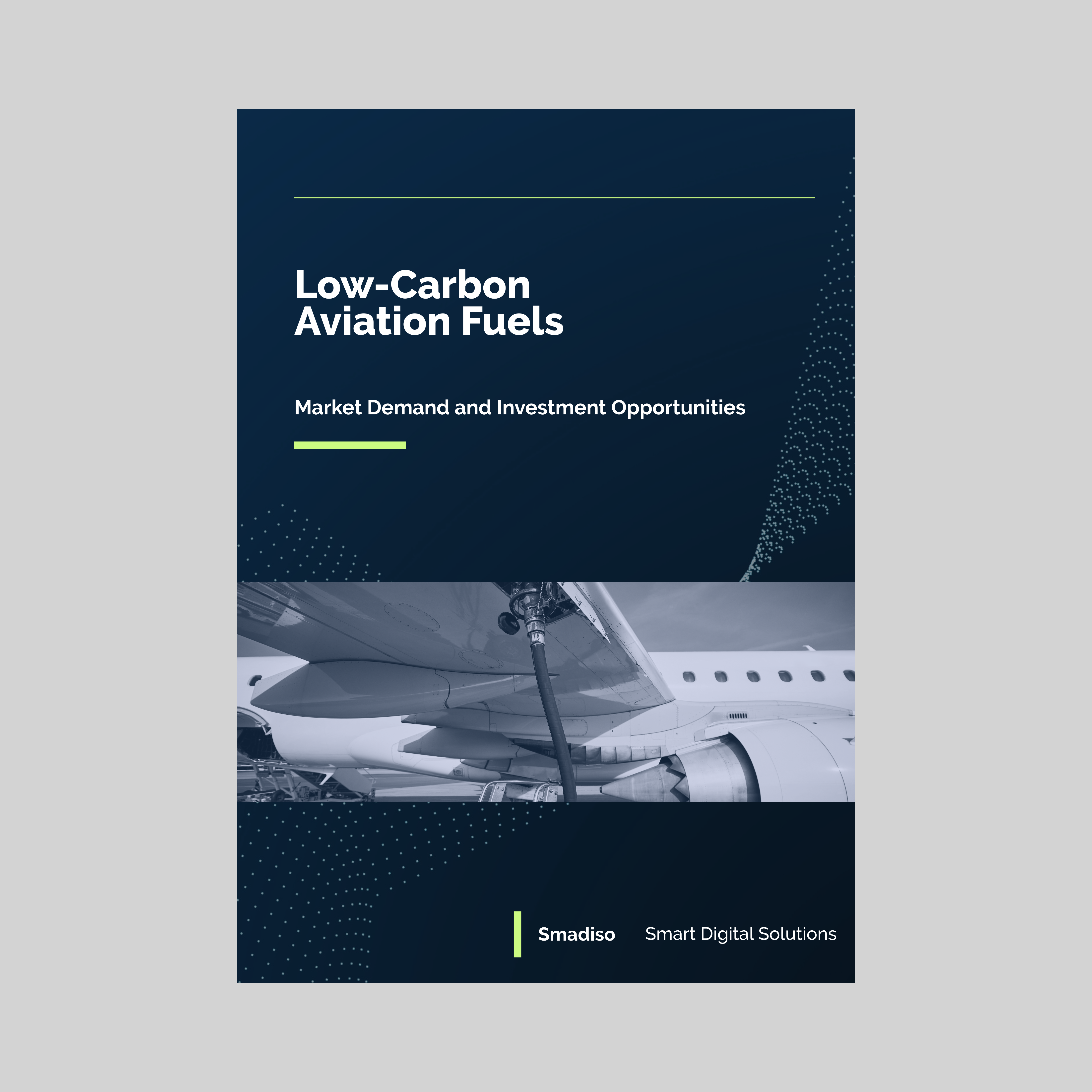
Low-Carbon Aviation Fuels
Market Demand and Investment Opportunities
$499.00
Low-carbon aviation fuels (LCAFs) – especially Sustainable Aviation Fuel (SAF) – are at the center of the aviation industry’s push to decarbonize. In 2024, SAF represented less than 1% of jet fuel use, but policy mandates, corporate net-zero commitments, and billions in investment are transforming it into a multi-billion-dollar market. By 2030, global SAF revenues are projected to surge from under $1 billion to $15–25 billion, growing at 50–60% CAGR.
This unprecedented expansion is driven by new regulations requiring SAF blending, corporate sustainability pledges, and long-term airline offtake contracts. While challenges remain in scaling supply, the demand outlook far exceeds production capacity, creating significant opportunities for investors and innovators to help close the gap.
Table of Contents
Executive Summary
Market Definition and Segmentation
Key Trends Driving Adoption
Market Size & Growth Forecasts (2024–2030)
Investment Landscape: Startups, VC Trends & Strategic Alliances
Key Players & Technology Providers
Regional Insights
Strategic Opportunities & Challenges for Investors
Appendices: Data Tables, Methodology, Sources
What’s Inside
✔ Market Growth Outlook (2024–2030) – SAF revenues projected to grow from ~$0.8B in 2024 to $15–25B by 2030.
✔ Competitive Landscape – Profiles of leading producers (Neste, World Energy, Fulcrum BioEnergy, LanzaTech, TotalEnergies, Shell, BP) and emerging startups.
✔ Investment & Revenue Potential – Opportunities across biofuels (HEFA, ATJ, FT-SPK), synthetic e-fuels, and advanced feedstocks.
✔ Regional Insights – North America leads production; Europe mandates adoption; Asia-Pacific is scaling rapidly.
✔ Opportunities & Risks – Regulatory drivers, feedstock availability, and cost reduction challenges that shape market entry.
Who This Report is For
Investors & VCs targeting energy transition and climate tech sectors.
Entrepreneurs developing SAF production technologies, feedstock solutions, or distribution models.
Corporate Strategists in aviation, oil & gas, or energy seeking to anticipate decarbonization shifts.
Consultants & Analysts advising on net-zero pathways, renewable fuels, and transportation sustainability.
Format: PDF (instant download)
Length: 32 pages
Coverage: Global with regional breakdowns
